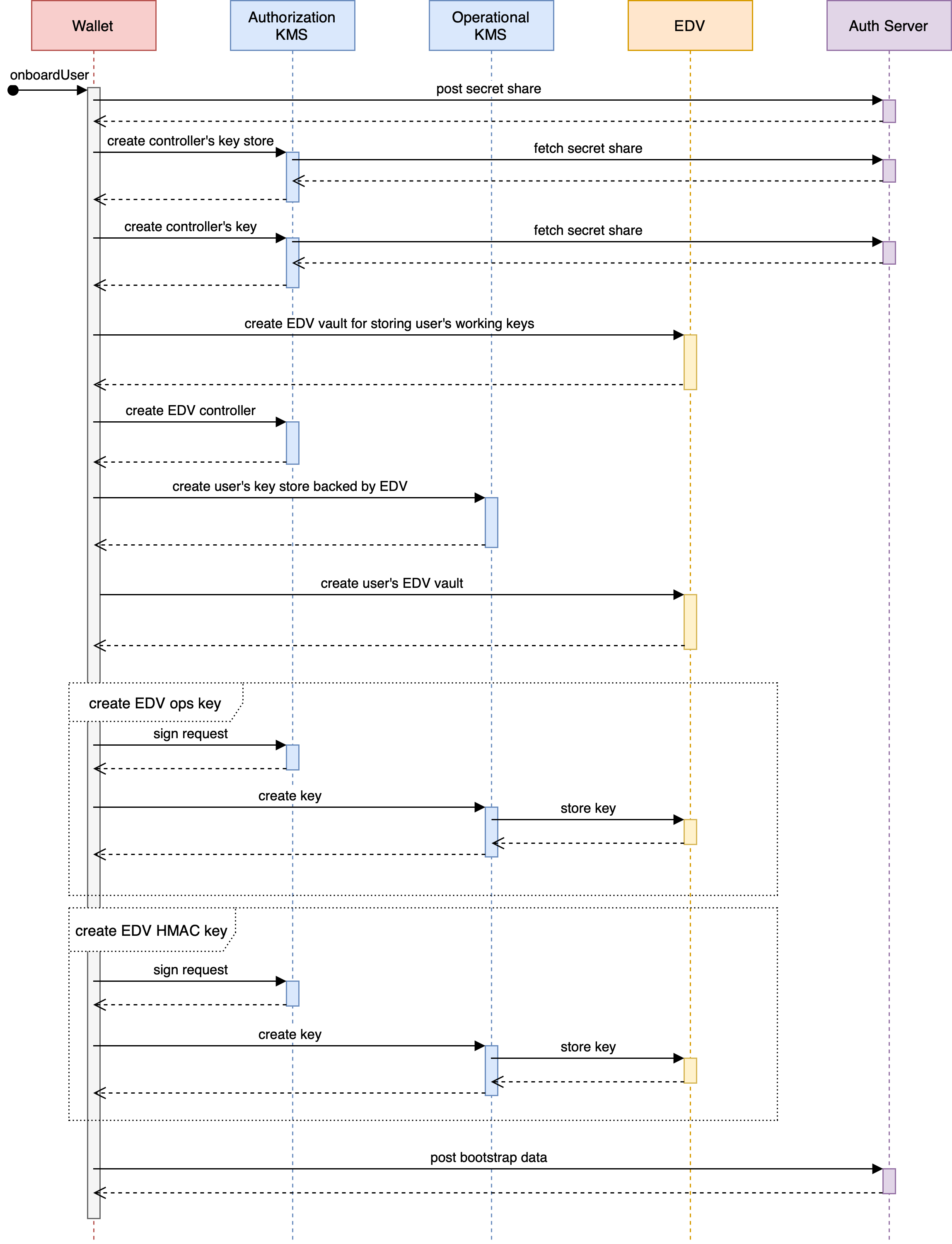User Onboarding and Recovery¶
In the TrustBloc environment, KMS server is used as an authorization KMS for supporting ZCAP-LD scheme and as an operational KMS for regular user’s crypto operations.
Both are part of the user onboarding flow in the Wallet.

Operational KMS¶
Operational KMS manages users’ working keys and supports crypto operations with those keys.
Keys are protected with a Local secret lock and saved to the EDV server provided by the user. EDV parameters are specified in the request upon creating a key store. Refer to the Storage section for the details.
Recipient and MAC keys for accessing an EDV server are stored in Server Key Manager. A primary key for the user’s key store lock is also saved here.
Operational KMS uses ZCAP-LD authorization scheme. Requests are expected to be signed with the Authorization KMS.
Server Key Manager is protected with an AWS secret lock.
Oathkeeper¶
Certain KMS endpoints are protected with the OAuth scheme. TrustBloc uses Oathkeeper as an authorization proxy in front of KMS services to protect the following endpoints:
POST /v1/keystoresfor creating a key store;POST /v1/keystores/didfor creating a DID (e.g. controller for EDV).
An example configuration for Authorization KMS can be found here.
Recovery¶
Planned functionality.